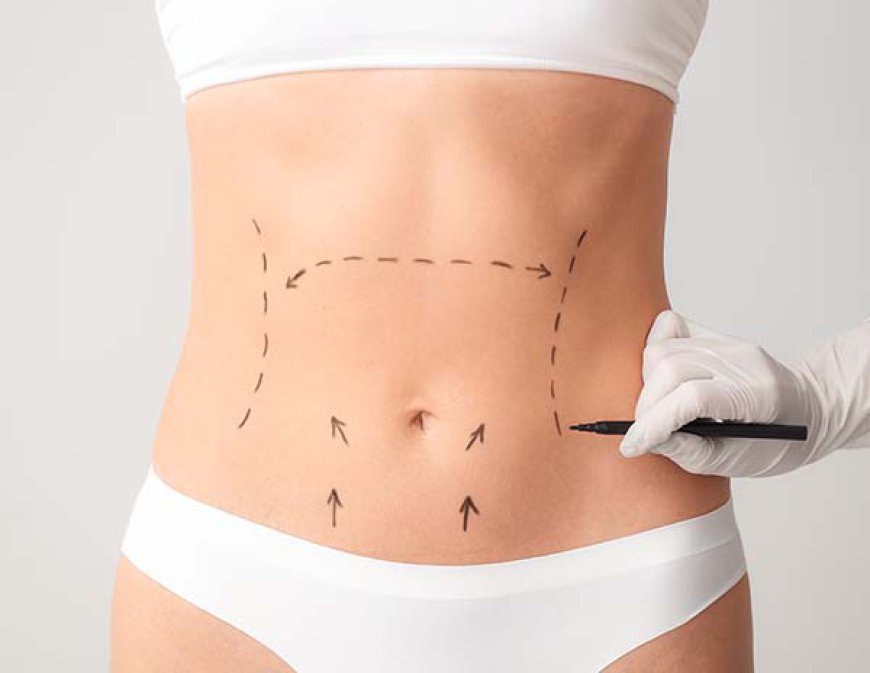What you need to know about your tummy tuck recovery
A belly fold — otherwise called abdominoplasty — is a corrective surgery to work on the shape and presence of the mid-region. During a belly fold, overabundance skin and fat are taken out from the midsection. Connective tissue in the mid-region (belt) as a rule is fixed with stitches too.

Recovering from a Tummy Tuck in Dubai (abdominoplasty) requires time, patience, and proper care to ensure the best possible outcome. Here’s a comprehensive guide on what you need to know about tummy tuck recovery:
1. Immediate Post-Surgery Phase (First Few Days)
- Hospital Stay: You may need to stay in the hospital for a night or two depending on your surgeon's advice.
- Pain and Discomfort: Expect some pain, swelling, and bruising. Pain medication will be prescribed to manage discomfort.
- Drains: Small tubes may be placed to drain excess fluid from the surgical site. These are usually removed within a week or two.
2. First Week
- Rest and Limited Movement: Rest is crucial. Avoid strenuous activities, but gentle movement is encouraged to promote blood circulation.
- Compression Garments: Wearing a compression garment helps reduce swelling and supports the healing tissues.
- Wound Care: Follow your surgeon’s instructions for cleaning and dressing the incision sites.
3. Weeks 2-4
- Gradual Increase in Activity: You can start light activities and walking, but avoid heavy lifting and strenuous exercise.
- Continued Use of Compression Garments: These should still be worn as directed to help with swelling and support.
- Follow-Up Visits: Attend all scheduled follow-up appointments to monitor your progress.
4. One to Three Months
- Return to Routine: Most patients can resume normal daily activities and work (if not physically demanding) within 2-4 weeks.
- Exercise: Gradually reintroduce exercise, starting with low-impact activities. Full exercise routines can usually resume after about 6-8 weeks, but always consult your surgeon.
- Scarring: Incisions will begin to fade, but it can take up to a year for scars to mature fully.
5. Long-Term Care
- Scar Management: Use recommended scar treatments (like silicone sheets or gels) to minimize scarring.
- Healthy Lifestyle: Maintain a stable weight through a balanced diet and regular exercise to prolong the results of your tummy tuck.
- Sun Protection: Protect your scars from sun exposure to prevent darkening.
Tips for a Smooth Recovery
- Follow Instructions: Adhere strictly to your surgeon’s post-operative care instructions.
- Stay Hydrated: Drink plenty of fluids to aid in healing.
- Healthy Diet: Eat a nutritious diet to support your body's recovery process.
- Listen to Your Body: Avoid overexertion and rest when you feel fatigued.
Potential Complications
- Infection: Signs include redness, increased pain, and fever. Contact your surgeon if you suspect an infection.
- Blood Clots: Rare but serious. Symptoms include swelling, pain, and redness in the leg.
- Seroma: Accumulation of fluid under the skin which may need to be drained.
Emotional and Psychological Considerations
- Patience is Key: Full recovery and final results can take several months. Be patient and give your body time to heal.
- Emotional Support: It’s normal to experience a range of emotions. Seek support from friends, family, or a professional if needed.
Conclusion
A tummy tuck can significantly enhance your appearance and confidence, but recovery requires diligence and care. Following your surgeon’s guidelines and taking steps to promote healing will help ensure the best possible outcome. Always consult your healthcare provider if you have concerns or questions during your recovery process.
